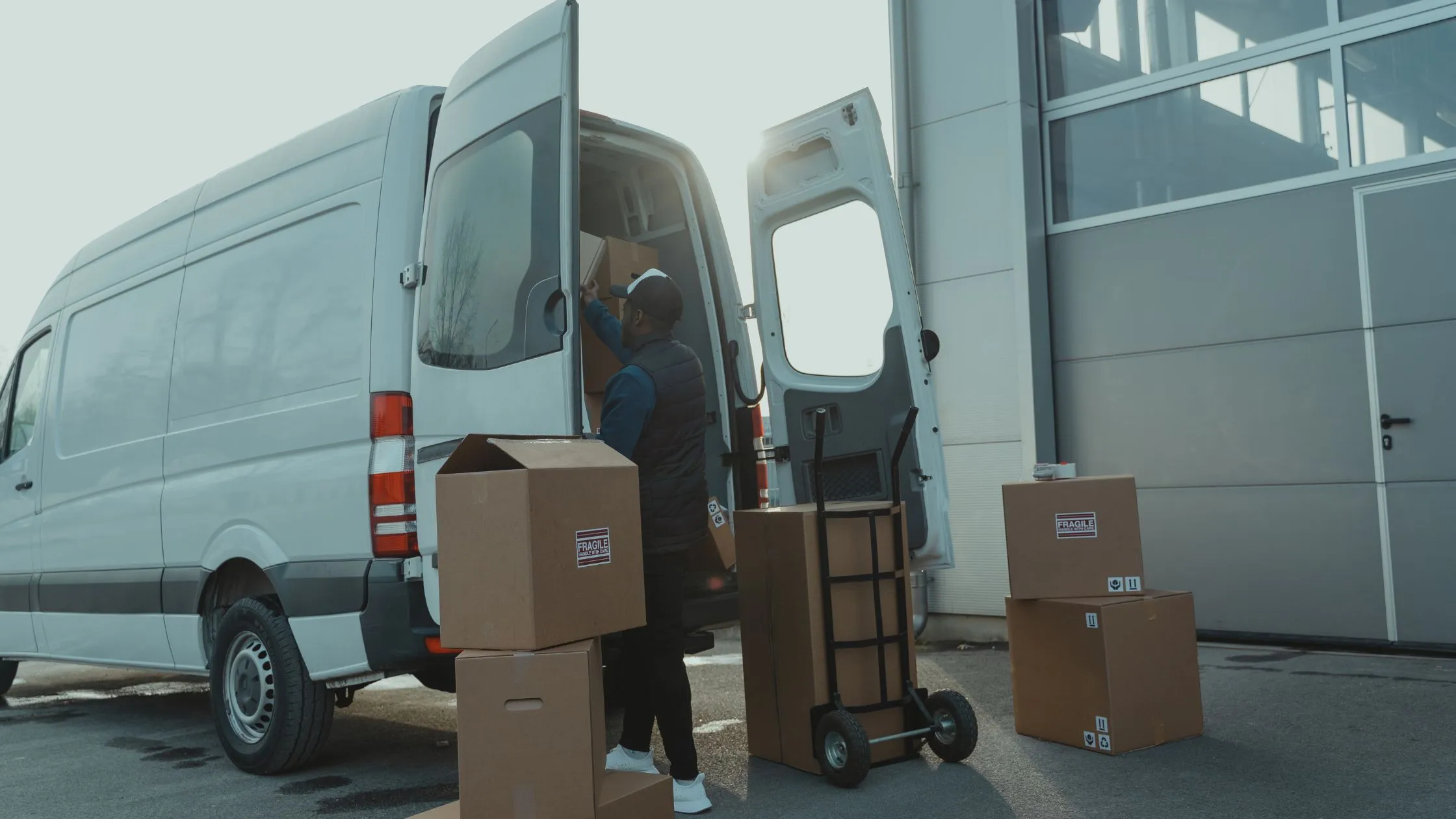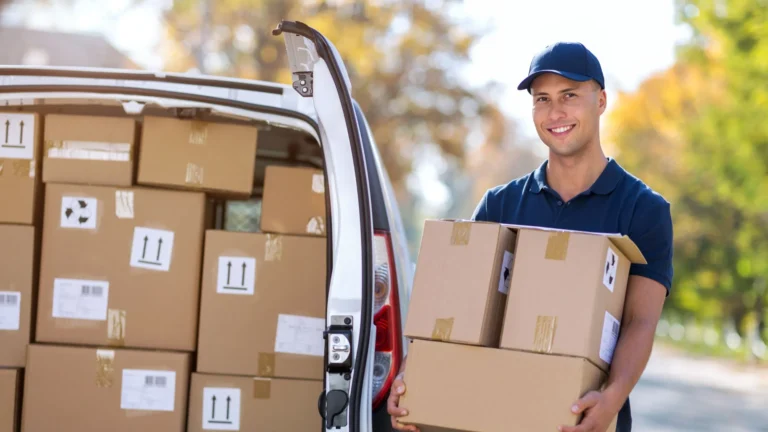Moving and Storage Logistics 101: A Guide to a Smooth and Stress-Free Relocation
Moving to a new home can feel like a whirlwind of emotions—excitement for a fresh start, anxiety about the process, and maybe a touch of sadness leaving behind familiar surroundings. But don’t worry! With the right planning and a few smart strategies, you can turn this potentially overwhelming experience into a smooth transition. Whether you’re moving across town or across the country, this guide will walk you through the essentials of moving and storage logistics, ensuring your relocation is as stress-free as possible. Let’s dive in!
1. Planning Your Move: The Foundation of a Smooth Relocation
If you’re like me, you might be tempted to pack everything at the last minute, but trust me, starting early is worth it. Your future self will thank you. Here’s how to lay the groundwork for a successful move:
- Create a Moving Checklist: A checklist keeps you organized and on track. Here’s a sample timeline to get you started:
- 8 weeks before: Declutter and sort through belongings.
- 6 weeks before: Research moving companies or rental trucks.
- 4 weeks before: Notify utility companies and update your address with the post office.
- 3 weeks before: Start packing non-essential items like seasonal decorations.
- 2 weeks before: Pack most items, leaving an “open first” box for essentials.
- 1 week before: Confirm details with movers or truck rental.
- Moving day: Keep essentials with you and have cash for tipping movers.
- Declutter Before You Pack: Moving is the perfect time to lighten your load. Go through each room and decide what to keep, sell, donate, or discard. Not only does this reduce what you need to move, but it also helps you start fresh. Fun fact: The average American moves 11.7 times in their lifetime, so you’ll likely do this again (moveBuddha)!
- Set a Budget: Moving can get pricey, with the industry generating $86 billion annually (Nexus Auto Transport). Estimate costs for movers, packing supplies, storage, and extras like gas or meals. Pro tip: Moving during off-peak seasons (like winter) can save you money, as summer months (May to August) account for 60% of moves.
- Choose Your Moving Date: Timing matters. Summer is peak season, meaning higher costs and busier schedules. If possible, opt for a less busy time to save money and reduce stress.
Pro Tip: Use a notebook or app like Trello to track your checklist and stay organized.
2. Choosing the Right Moving Company: Your Partners in Relocation
Hiring professional movers can make your life easier, but choosing the right company is crucial. Here’s how to find a reliable partner:
- Research Thoroughly: Check reviews on platforms like Google or Yelp to gauge a company’s reputation. Look for consistent positive feedback and how they handle complaints.
- Verify Credentials: Ensure the company is licensed and insured. In the U.S., interstate movers should have a USDOT number, which you can verify on the FMCSA website.
- Get Multiple Quotes: Contact at least three companies for quotes. Ask what’s included—packing, unpacking, storage, etc. Be wary of unusually low quotes, as they might signal hidden fees.
- Understand Insurance: Most movers offer basic coverage, but it may not fully protect high-value items. Consider additional insurance for peace of mind, especially for long-distance moves.
- Ask About Fees: Clarify potential extra costs, like fuel surcharges or charges for heavy items. A reputable company will be upfront about pricing.
Pro Tip: Check if the company is a member of the American Moving and Storage Association, a sign of industry credibility.
3. Packing Strategies: Taming the Chaos
Packing is often the most daunting part of moving, but it’s also a chance to get organized. Here’s how to pack like a pro:
- Gather Supplies: Stock up on sturdy boxes, packing tape, bubble wrap, packing paper, markers, and furniture pads. You can often find free boxes at local stores or on sites like Craigslist.
- Pack Room by Room: Stay organized by focusing on one room at a time. Start with items you use least, like holiday decorations or guest room linens.
- Label Clearly: Write the contents and destination room on each box (e.g., “Kitchen—Pots and Pans”). Color-coded labels can make unpacking even easier.
- Protect Fragile Items: Wrap delicate items like glassware individually in packing paper or bubble wrap. Use dividers or packing peanuts for extra protection. For dishes, consider specialized dish barrel boxes.
- Disassemble Furniture: Take apart beds, bookshelves, or tables, and keep screws in labeled bags for easy reassembly.
- Pack an “Open First” Box: This box is your lifeline on moving day. Include toiletries, a change of clothes, important documents, chargers, and snacks.
- Special Packing Tips:
- Books: Pack in small boxes to keep them manageable.
- Clothing: Leave clothes on hangers and cover with garbage bags, or use suitcases for folded items.
- Electronics: Take photos of cable setups before unplugging, wrap cords neatly, and use original boxes if available.
Pro Tip: Take a photo of each packed box’s contents before sealing it. It’s a lifesaver if you need to find something later (LifeStorage).
4. Storage Solutions: When You Need Extra Space
Storage can be a game-changer during a move, especially if you’re downsizing or facing a gap between homes. The self-storage industry, generating $39.5 billion in 2021, is booming for a reason (Neighbor). Here’s what you need to know:
- When to Use Storage: Storage is ideal if your new home isn’t ready, you’re moving into temporary housing, or you need to declutter.
- Types of Storage:
- Self-Storage Units: Great for long-term needs, available in various sizes. Many facilities, like Public Storage, offer climate control for sensitive items.
- Portable Containers: Companies like PODS deliver a container to your home, you load it, and they store or deliver it.
- Moving Company Storage: Some movers provide short-term storage, convenient if you’re already using their services.
- Choosing a Facility: Look for:
- Location: Close to your home for easy access.
- Security: 24-hour surveillance and gated entry.
- Climate Control: Essential for electronics, artwork, or wood furniture.
- Cost: Compare monthly rates and check for discounts.
- Preparing for Storage: Use sturdy boxes, wrap fragile items, and label everything. Keep an inventory list to track what’s stored.
- What Not to Store:
- Food or perishables
- Plants
- Hazardous materials (e.g., paints, chemicals)
- Valuables (unless the facility has top-notch security)
Pro Tip: Create an aisle in your storage unit for easy access to boxes without rearranging everything (Alan Cook Removals).
5. Cost Management: Saving Money Where You Can
Moving can strain your wallet, but there are ways to keep costs down:
- DIY vs. Professional Movers: If you’re up for it, renting a truck from U-Haul can save money, but factor in gas, insurance, and effort.
- Off-Peak Moving: Moving outside the busy summer season can lower costs significantly.
- Storage Savings: Look for facilities offering first-month-free deals or long-term discounts.
- Declutter Early: The less you move or store, the less you pay. Sell or donate items to cut costs and maybe earn a little cash.
Pro Tip: Ask moving companies about discounts for students, seniors, or military personnel.
6. Legal and Insurance Considerations: Protecting Your Belongings
Protecting your items during a move is critical. Here’s what to consider:
- Verify Mover Credentials: Ensure movers are licensed and insured. Check their USDOT number on the FMCSA website.
- Understand Insurance Options: Most movers offer basic coverage (often $0.60 per pound per item), but it’s limited. Consider full-value protection for pricier items.
- Document Valuables: Take photos of high-value items and note serial numbers. Keep this list handy in case of damage or loss.
- Storage Insurance: Check if your storage facility offers insurance. Some include basic coverage, but you may need extra for valuable items.
Pro Tip: Keep important documents (like your lease or insurance policy) with you during the move, not in a moving truck.
7. Special Considerations: Tailoring Your Move
Every move is unique, so here are tips for specific scenarios:
- Moving with Pets: Keep pets safe and calm. Consider boarding them on moving day or having a friend watch them.
- Moving with Children: Involve kids in packing their toys to ease the transition. Pack a box with their favorite items for the trip.
- Long-Distance Moves: Plan rest stops if driving, and ensure you have documents for crossing state lines.
- International Moves: Research customs regulations, shipping options, and visa requirements well in advance. Companies like International Van Lines can help.
Pro Tip: For kids, create a “moving adventure” story to make the process fun and less stressful.
8. Eco-Friendly Moving Tips: Going Green
Sustainability matters, and moving is a great time to go green:
- Use Recycled Boxes: Borrow from friends or check Freecycle for used boxes.
- Donate Unwanted Items: Give items a second life through local charities.
- Choose Green Movers: Some companies, like Eco Movers, use fuel-efficient vehicles.
- Recycle Packing Materials: After unpacking, recycle boxes and paper at local centers.
Moving Statistics: The Big Picture
To put moving into perspective:
- Nearly 28 million Americans move each year.
- The average American moves 11.7 times in their lifetime.
- The moving industry employs 122,600 people with a payroll of over $3.5 billion.
- The self-storage industry supports this with over 50,000 facilities nationwide.
Conclusion: You’ve Got This!
Moving and storage logistics might seem complex, but by breaking it down into manageable steps, you can handle it with ease. Start early, choose reliable movers, pack smartly, and consider storage options when needed. Whether you’re moving for a new job, a bigger home, or a fresh start, these tips will set you up for success. So, grab a notebook, start your checklist, and get ready for your next adventure!
Check out our following useful tips
Can you ship alcohol?
Cheapest way to ship to Thailand
UPS vs USPS vs Fedex Comparison




وی دایت اپلاید نوتریشن، یک مکمل هیبریدی یا ترکیبی پیشرفته است.